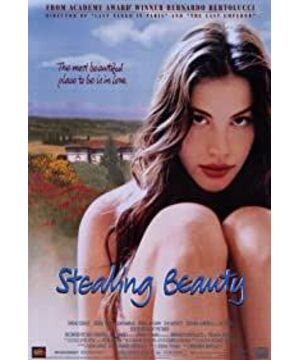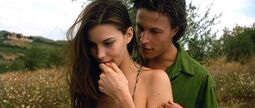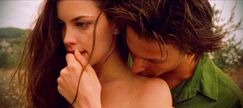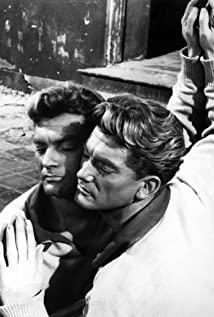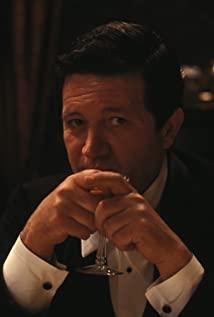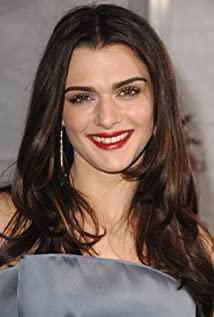"I Dancing Alone" is a new work by the famous Italian director Bernalto Bertolucci after he completed his so-called "Oriental Trilogy" ("The Last Emperor", "Tea in the Desert" and "Little Living Buddha") abroad. Another film made in 1995 when I returned to my hometown after 15 years of separation. The film expresses a more inclusive ideological connotation through lyrical images, and has dumped many fans. The story begins with the beautiful American girl Lucy. In order to find her biological father and love, she came alone to the beautiful Tuscany, Italy, and lived in the home of her mother's ex-girlfriend. Here, the girl met some strange people. Life showed her a completely unfamiliar side. It was here that she learned to face herself and others. Still here, she found her biological father and found love as she wished. When the film was shown in Italy, it caused a sensation among teenagers and received rave reviews from critics.
When talking about the original intention of filming "I Dance Alone", director Bertolucci said that after filming "The Last Emperor", "Tea in the Desert" and "Little Living Buddha", I don't want to make any more historical films. I wanted to do something more personal, more visceral. So I chose the theme of "I Dance Alone": the young and beautiful Lucy started by looking for her biological father, discovering and knowing the world.
In the film, the director depicts the Tuscany region of Italy as idyllic, like a paradise. There lived British, French, Americans and Italians. They are artists, writers, lawyers, etc., all intellectuals, living in isolation because they are far away from home and feel lonely. It is a microcosm of a colonized society. This villa in Tuscany is still as cosmopolitan as Bertolucci's "Trilogy of the East". He is imitating himself, sometimes unconsciously, very peacefully, but with the same misgivings he always has to describe this small society. This paradise, which the film focuses on depicting, will remind us of Boccaccio's "Ten Days". The difference is that the people in "Decameron" go to the countryside to have fun and escape the plague that ravaged Florence. What the characters in this film are trying to escape are modern media, politics, and secular morality. Perhaps this little international community is a metaphor for a cinematic, artistic world that sometimes transcends language and cultural barriers. Some extreme and profound ideas are conceived in the beautiful villas, picturesque scenery and mysterious atmosphere.
Lucy came to this isolated small society and felt lonely because of her isolation. She asked people around her questions but couldn't get the answers she wanted. Director Bertolucci seems to be going through an equally intense identity crisis: he is trying to rediscover a true, pure cinematic form with this film, free from the past that made him an epic, international writer's film. form. The hostess of the villa confessed to her husband that she wanted to leave this beautiful and comfortable Tuscany and return to the foggy, rainy hometown where the milk always spoiled. Director Bertolucci seems to explain her actions of going to the country and returning through her choice: no matter what, it is equally painful, so as to trigger the audience to identify with the theme of the film. The face-to-face scrutiny between the sculptor Glasson and his "work", Lucy, is a metaphor for another recognition of the director. Lucy interprets youth, freedom and purity, facing an artist who sees through everything, her "author", just like yesterday's Bertolucci's question to today's Bertolucci. The long shots taken in the sculptor's study again heavily emphasize the contradictory relationship between the artist and his models. While identifying with Lucy and Gleason, director Bertolucci finds common ground and connection between his past and present between the artist of yesterday and the young girl who enjoys today and has tomorrow. Therefore, some film critics called the film a "return and introspection" of director Bertolucci.
Unlike before, Bertolucci's film does not show major social themes, and never mentions his relationship with Italy's politics and history, focusing on the introspective aspects of his director and filmmaking. The Italian society in the film is the background of the whole film, completely separated from the story. In an almost surreal atmosphere, the director expresses the moment of the emotional journey of life through the process of American girls looking for their biological father and love, expressing the director's reflection on life and praise for pure love. In a set of long shots of the party interspersed with postmodern ballet, the ghost of Visconti appears to be visible, the eccentric art dealer reminiscent of Cocteau. Seriously ill playwrights make people aware of the imminent death. The obsession and confusion about death was also an important part of Bertolucci's films. From the suicide of the protagonist of "Before the Revolution" to Markovic's dying scene in "Tea in the Desert," death is involved. However, each character in the film "I Dance Alone" has a certain role, and it is limited to a very simple and symbolic function. For example, disappointed sculptors, decadent young couples, beautiful suitors, weird and mysterious art dealers... The director created a style of juxtaposition of as many incongruities as possible, in the cultural, emotional, multi-character The confrontation between the two, and the accumulation of a delicate interpretation replaces the climax of the film, little by little, gradually accumulating to finally reach the ultimate goal of the heroine and make her behavior more reasonable, even if some of the process The plot is slightly redundant and cumbersome.
The tone of the film is lighthearted and cheerful, and it is always touching. The clear and extreme visual effects make it seem that the camera has become a part of the director's body, accurately expressing the director's intention. The repeated scenes that appear in the film from time to time are like the portrayal of the director's conflicted heart, and it is also like Bertolucci's already possessed film style swaying under various influences. We can see that there is some very attractive and moving material flashing through the film, unfortunately these are not further expanded and become embellishments. For the first time, the director used rock music from small films at the time in his own film. He wanted to create a contrast between the timeless beauty of Tuscany and the modern, trendy pop songs, trying to close the distance created by the impact of various characters and various cultures. Liv Tyler, an American girl who was only 18 years old at the time, had a pair of big eyes as clear and clear as spring water, and her facial lines were full of oriental charm. Her heroine Lucy is fresh, sexy and charming. The sassy rock music is complemented by the bright and innocent actress Liv Tyler, making the film an unexpected sensation among Italian teens. This surprised and excited the director at the same time. Critics credited Liv Tyler's performance to the film's success. In the same way, the film also made her, who was not well-known, immediately became famous and became a very popular star. During the 1996 Cannes International Film Festival in France, her beautiful face filled a slew of advertisements and billboards. This beautiful girl used to be the center of attention at that film festival.
View more about Stealing Beauty reviews


